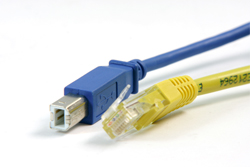Darren Sayer, Associate Assistant Headteacher at Hanson Academy in Bradford, explains how the census offers a significant learning opportunity for students in England and Wales this year. By understanding the census, students can recognise and appreciate the importance of their local community, and how each individual story is part of a bigger picture. Darren explores some of the challenges their school has faced in light of the pandemic and the switch to remote learning and highlights the effectiveness of using relevant examples with young people, such as Census 2021.
The empowerment of distance learning happens through livestreaming. It is the most significant - and least utilized - tool in a teacher’s virtual learning toolbox, and is ideal for remote learning during the pandemic.
When the country needed to close its schools due to coronavirus, like many schools nationally, Beacon Hill Academy found this challenging. All staff and learners in Beacon Hill Academy already had both email addresses and Active Directory login details, but our technology implementation in lessons was limited at this point. School closures forced us to accelerate using digital technology to support pupils’ learning and development.
The effects of the pandemic are felt by all, but the impact it has on the early careers market places significant pressure on the class of 2020, be that school leavers or graduates. Studies are already suggesting that young people will be worst impacted by the inevitable financial crisis; following the 2008 recession, unemployment among GCSE-level students peaked at 32.3%. With over 1 million young people expected to be unemployed in the wake of COVID-19 coupled with other coronavirus-related stresses, the anxiety all this brings upon students is also taking a toll on their mental health.

There has been a lot of discussion in the media recently about Bring Your Own Device (BOYD) or Bring Your Own Technology (BYOT). A concept that started out in the business world, it now also refers to students who use their own electronic devices to support their learning whilst at school, from home, or at other remote locations. Connectivity of the school's network with personal devices is therefore an area that requires careful attention.
It is of paramount importance that students who use their own devices are able to do so without putting their school’s network or themselves at risk. The school must invest in a robust, accessible and cost effective security system that encompasses the school’s and student’s needs. This may be a controlled or control-less option - the former being more favourable due to the rise of technology in education and the increase in usage of wireless devices and cloud-hosted systems.

A community-driven platform for showcasing the latest innovations and voices in schools
Pioneer House
North Road
Ellesmere Port
CH65 1AD
United Kingdom